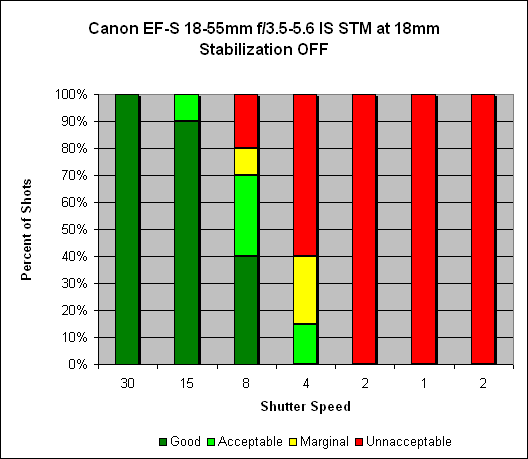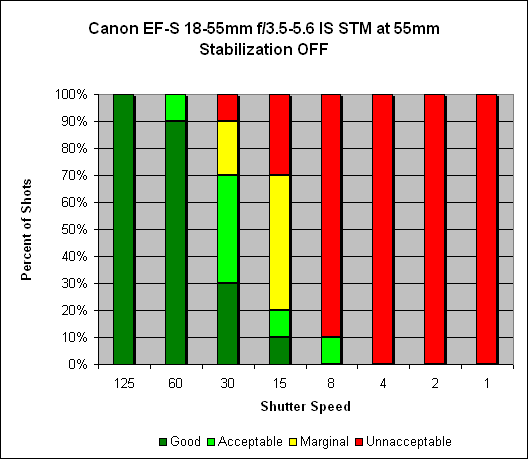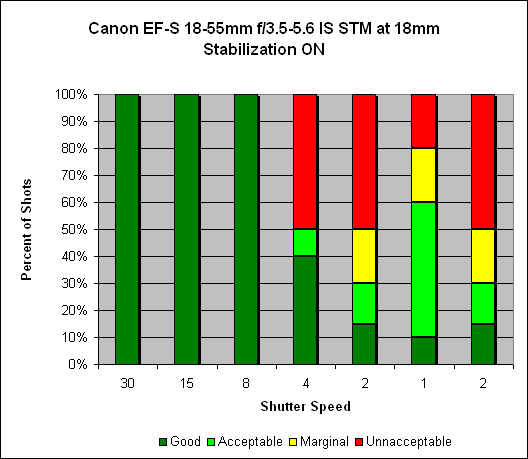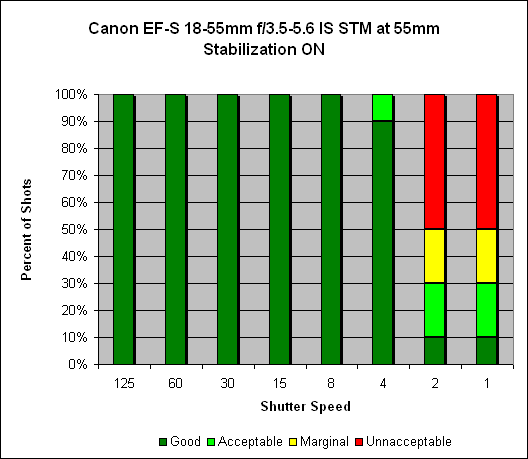Most people tend to think of image stabilization as being mainly for telephoto lenses. While it's true that their longer focal lengths tend to magnify the effects of camera shake, image stabilization can provde a very useful assist at wider angle focal lengths as well; anyone who's ever tried to blur the image of a waterfall, while keeping the surrounding landsape tack-sharp knows exactly what I'm talking about.
At 18mm, the lens shows about a stop and a half of hand-holding stabilization. At 1/8 of a second, you're not worried so much about stopping the movement of the camera, as you are about stopping movement of the subject, so it isn't as useful as it might seem, with one exception: shooting movies. Still, it's nice to be able to get consistently sharp results at shutter speeds as low as 1/4s.
 |
| Mouse over this chart to show results with IS activated. |
Zoomed in to 55mm, we see some remarkable performance: about four stops of stabilization (this is one of the first times we have seen results that lived up to the manufacturer's claims). As expected, the typical shooter, without stabilization, can get consistently sharp images at 1/60s (see the "one over focal length" rule of thumb); with stabilization on, the shooter can get consistently sharp images at speeds as low as 1/4s (!).
 |
| Mouse over this chart to show results with IS activated. |
IS systems tend to provide more benefit to less-stable shooters than very steady ones, so most users will see the same or greater amounts of shake reduction as we measured here. You can read more about our IS test methodology here: SLRgear IS Test Methodology, v2.

